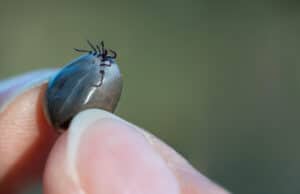With its extreme northern latitude, Maine might seem like the last place you expect to find ticks. But, there are actually more than ten species of ticks in Maine. Of these, three are the most common: the American dog tick, woodchuck tick, and deer tick.
Here, we’ll take a closer look at ten of the most common ticks in Maine, starting with the three species you’re most likely to encounter. We’ll go over each tick’s appearance, favored prey, and ability to transmit pathogens.
American Dog Tick (Dermacentor variabilis)
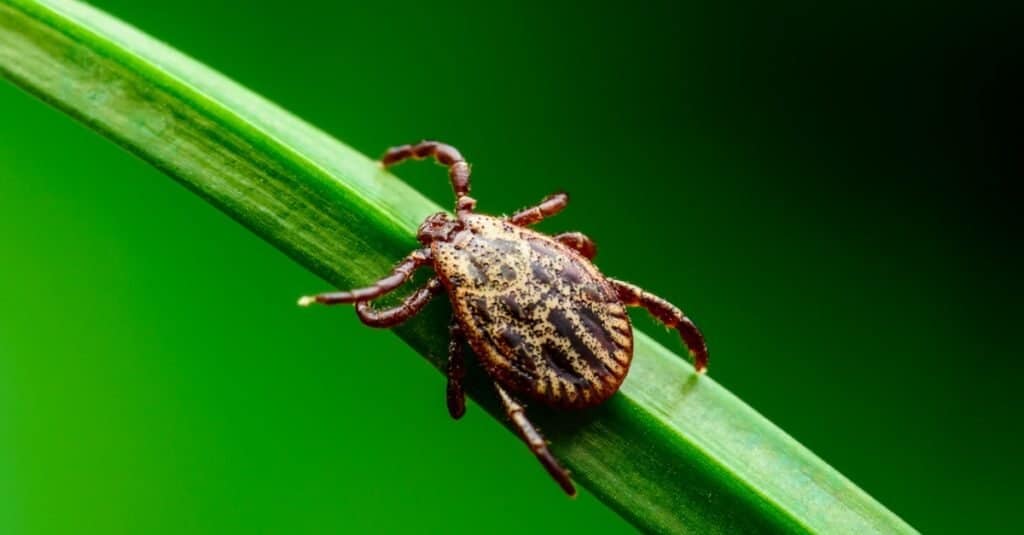
The American dog tick, also known as the wood tick, is one of the most ticks in the United States.
©iStock.com/nechaev-kon
One of two species of dog tick, the American dog tick mostly bites canines, though bites to humans are possible. These ticks are dark brown in color, with tan mottling on their backs. They grow significantly bigger than any other species of ticks in Maine. American dog ticks are the primary vector for Rocky Mountain spotted fever.
Woodchuck Tick (Ixodes cookei)
Woodchuck ticks are one of the three most common ticks in Maine. They only occasionally bite humans, preferring instead the blood of woodchucks, dogs, cats, raccoons, porcupines, and other small mammals. Adults are sesame seed sized, with a red brown, oval shaped body. They look similar to deer ticks (image below), the primary difference being that wood tick legs are brown, whereas deer ticks have black legs.
Deer Tick (Ixodes scapularis)
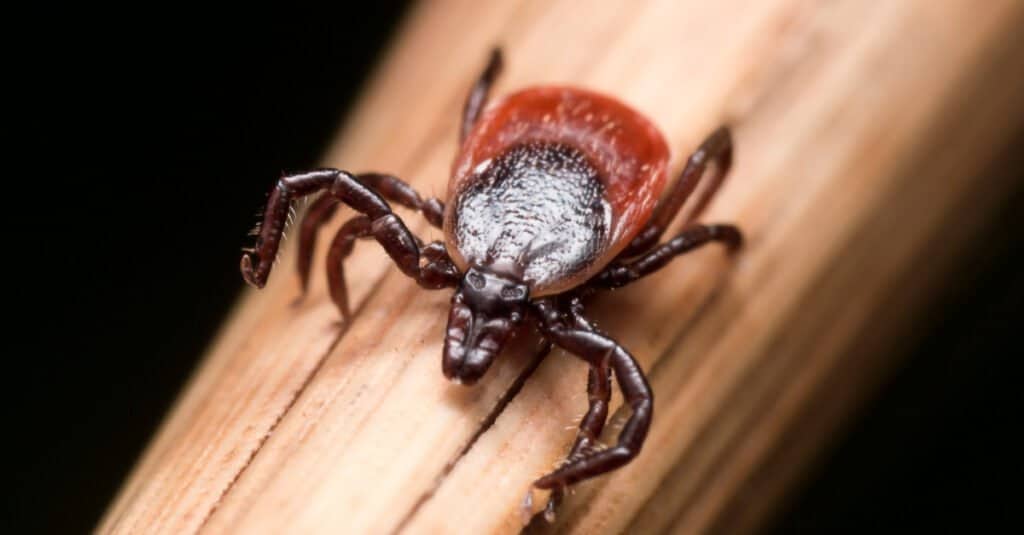
The deer tick is commonly known as the black-legged tick, the names are interchangeable.
©Steven Ellingson/Shutterstock.com
Deer ticks are the smallest of the three most common ticks in Maine. They’re also the only tick in the state capable of transmitting Lyme disease. Adult deer ticks prefer feeding off medium sized mammals, like white-tailed deer, while nymphs prey on smaller creatures like chipmunks and squirrels. Females are easily recognizable by their red brown bodies and black legs. Males have black legs and black bodies.
Squirrel Tick (Ixodes marxi)
Squirrel ticks are paler than most species of ticks in Maine. Females have tan bodies, while males have light brown bodies. They feed almost exclusively on small mammals like rats, mice, squirrels, chipmunks, raccoons, rabbits, and foxes. These ticks rarely bite humans, and do not transmit Lyme disease.
Rabbit Tick (Haemaphysalis leporispalustris)
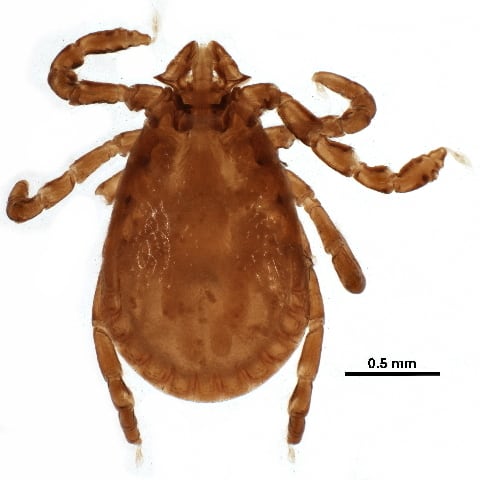
These ticks don’t just drink the blood of rabbits, they also feed on terrestrial birds.
©CBG Photography Group, Centre for Biodiversity Genomics / Creative Commons – License
Rabbit ticks are one of the smaller species of tick in Maine, they’re also generally not of concern to humans. These ticks prefer hosts of the rabbit or ruffed grouse variety, and very seldom attach to humans. They’re common throughout North, Central, and South America. Rabbit ticks are about the size of a sesame seed, with both males and females displaying a light red-brown color. They do not transmit Lyme disease, but they may pass Rocky Mountain spotted fever or Tularemia onto their rabbit hosts.
Seabird Tick (Ixodes uriae)
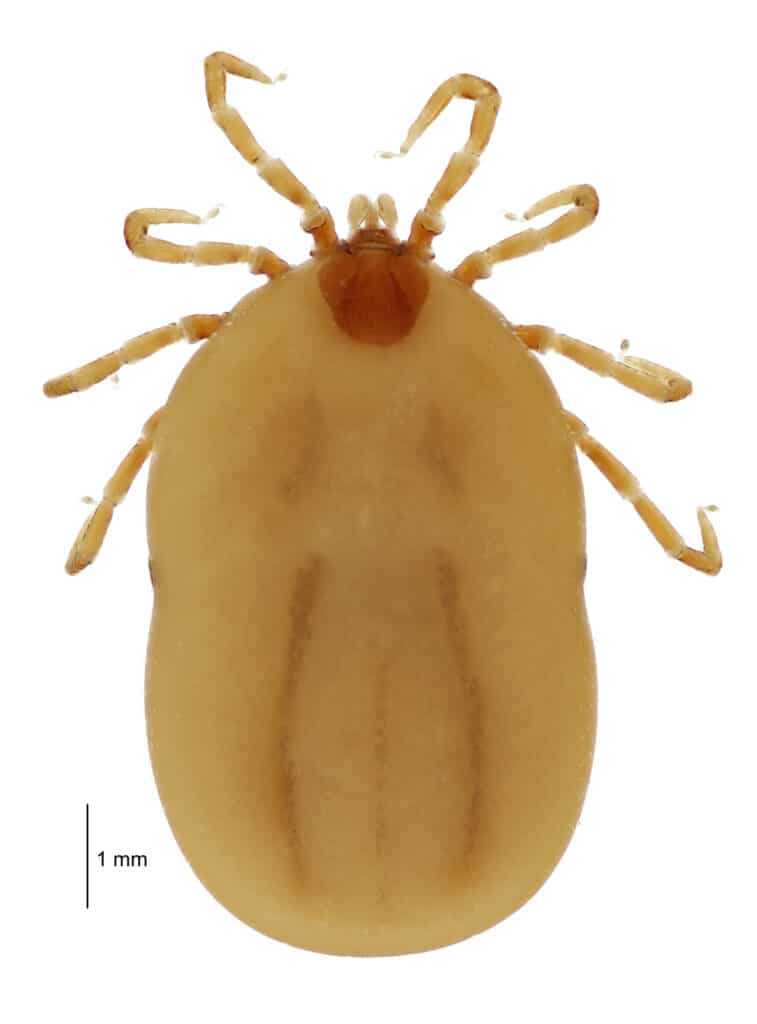
Interestingly, the seabird tick is the only tick recorded in Antarctica.
©Birgit Rhode / Creative Commons 4.0 – License
Seabird ticks occur only in coastal Maine, particularly in or near seabird nests. As its name suggests, this species of ticks in Maine feeds almost exclusively on seabirds. Favorite prey species include puffins, penguins, cormorants, and gannets. Seabird ticks may be tan, light brown, or dark brown, and grow to around the same size as the rabbit tick. These ticks almost never bite humans, and are not known to transmit Lyme disease.
Gulf Coast Tick (Amblyomma maculatum)

The gulf coast tick is known as a three-host tick, because it takes one host per life stage. Life stages include larva, nymph, and adult.
©iStock.com/cturtletrax
Gulf Coast ticks are not generally considered native ticks in Maine. Rather, they occasionally pop up in coastal areas of the state. They feed primarily on cattle, dogs, deer, and horses. Bites to humans are rare, as these ticks aren’t commonly found. However, Gulf Coast ticks are known vectors of several serious illnesses, including tick paralysis, rickettsiosis, and canine hepatozoonosis. They’re larger than other ticks in Maine, growing up to ¼ inch long unfed.
Winter Tick (Dermacentor albipictus)
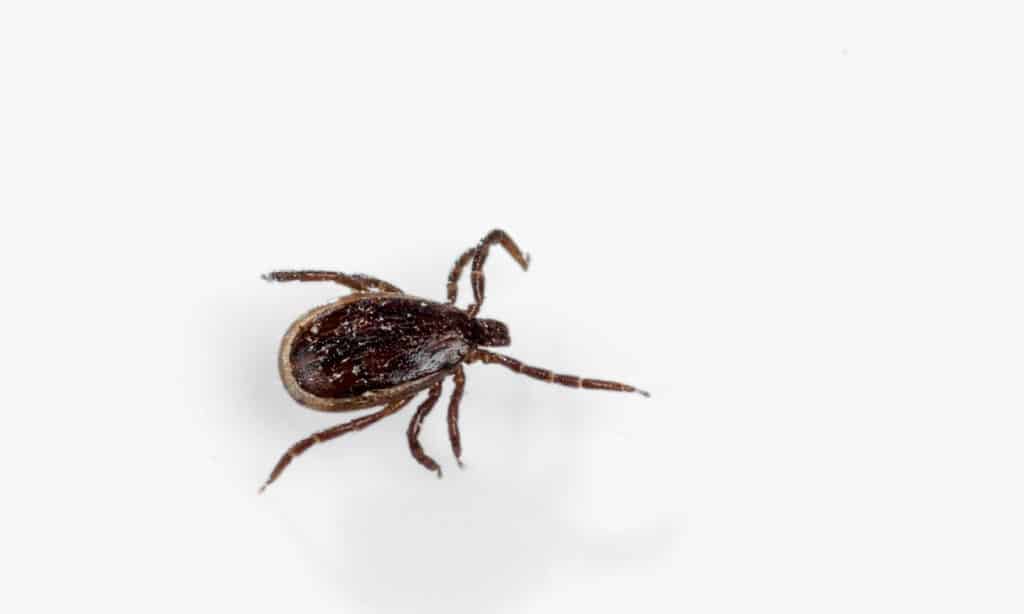
Also known as the moose tick, winter ticks live all over the United States and Canada.
©iStock.com/VladK213
Winter ticks live in the forests hills of inland Maine. They’re one of the most common, but least seen, of all ticks in Maine. They almost never bite humans, preferring instead the blood of moose, deer, elk, cattle, and horses. Winter ticks have mottled tan and brown bodies which can swell up to ½ inch long when fully engorged. They’re generally harmless to their hosts, unless too many attach to one animal. Extreme infestations can lead to anemia, hair loss, and eventual death.
Mouse Tick (Ixodes muris)
Of all the ticks in Maine, mouse ticks are the most often found attached to mice. They only occasionally bite humans or dogs. Yet, as you might have guessed from their name, mouse ticks feed primarily on mice. Females are tan with long bodies and visible mouthparts, while males are dark brown. In lieu of mice, mouse ticks also prey upon voles, rats, cats, muskrats, and shrews. Thought capable of carrying Lyme disease, mouse ticks infrequently transmit this bacterial infection to humans.
Lone Star Tick (Amblyomma americanum)
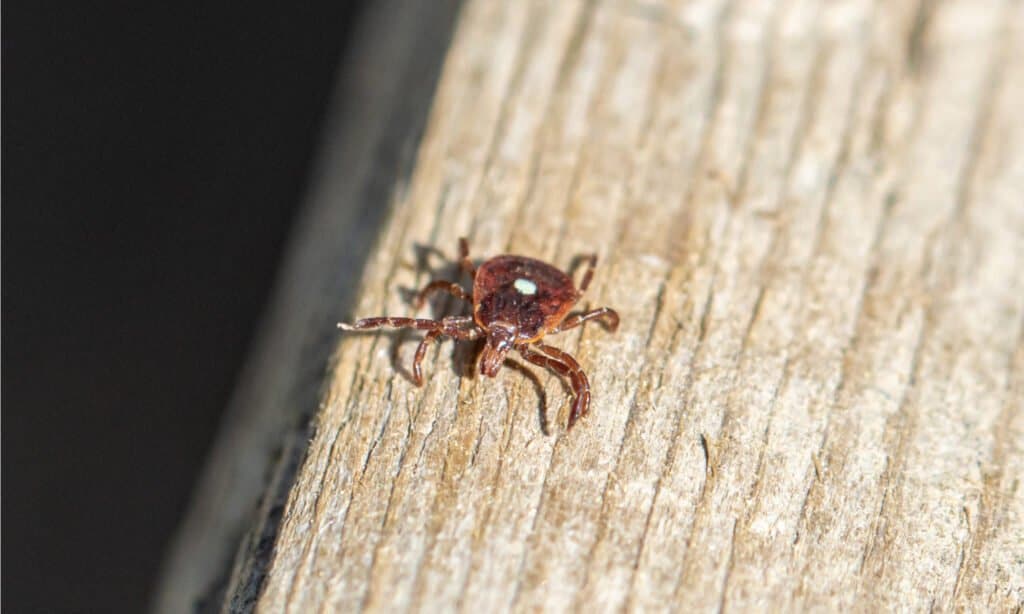
Named for the ‘lone star’ on the female’s back, these ticks are easy to recognize.
©Maria T Hoffman/Shutterstock.com
While female lone star ticks have a single dot on their back, males exhibit a uniform red brown color. These ticks in Maine prefer feeding on white-tailed deer, but do occasionally bite humans. They live in coastal forests, usually near sources of water, like rivers or streams. Lone star ticks carry Rocky Mountain spotted fever, ehrlichiosis, tularemia, and tick paralysis. These illnesses may be transmitted to humans through the bites of infected ticks.
The photo featured at the top of this post is © iStock.com/dmf87
Thank you for reading! Have some feedback for us? Contact the AZ Animals editorial team.





